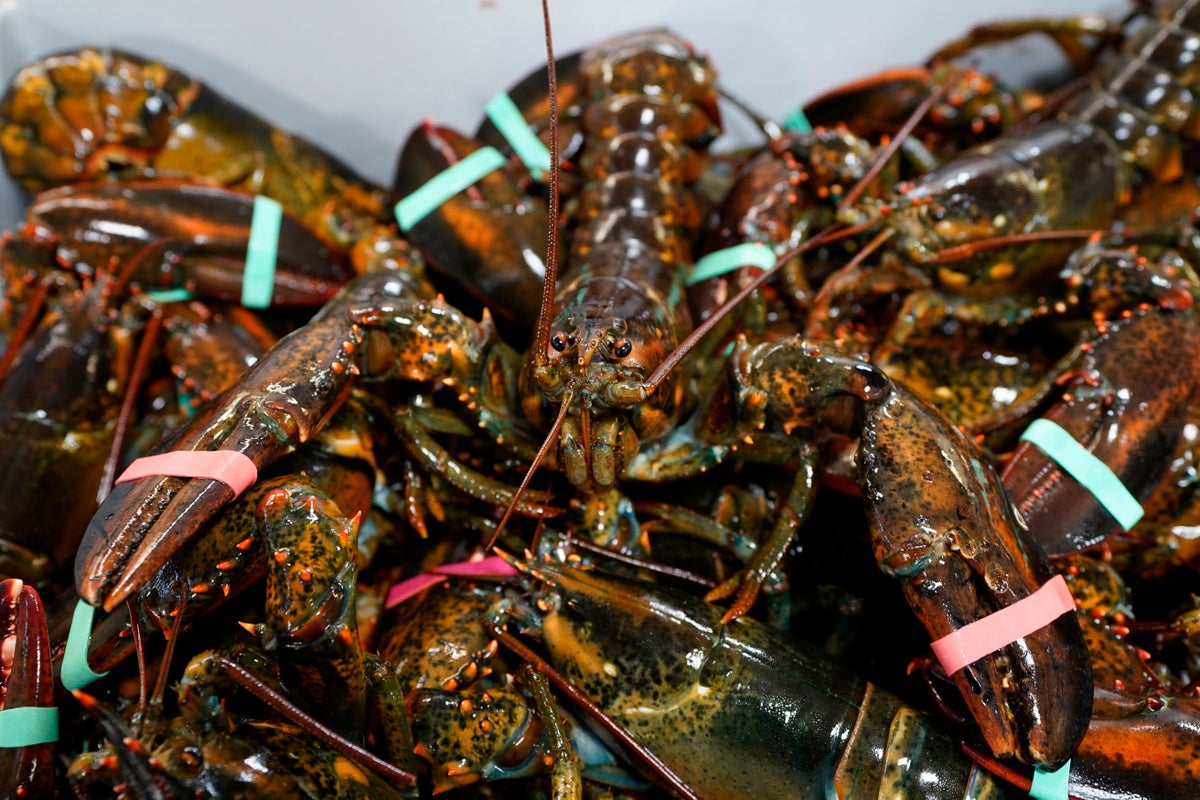
Fishers of Maine lobster, one of the most lucrative seafood species in the U.S., had a smaller haul during a year in which the industry battled surging fuel and bait prices, rebukes from key retailers and the looming possibility of new fishing restrictions.
Maine lobster has exploded in value in recent years in part due to growing international demand from countries such as China. The industry brought about 98 million pounds of lobster to the docks worth about $389 million in 2022, Maine regulators said Friday. That was more than 11% less than the previous year, in which they harvested more than 110 million pounds of lobster worth more than $740 million.
The value of lobsters also fell to a little less than $4 per pound at the docks, the lowest since 2017, a year after setting a record of more than $6.70 in 2021.
The industry has experienced growth in recent years, as fishermen have caught more than 96 million pounds of lobster per year for 13 years in a row after never previously reaching that mark. But it is also wrangling with threats such as proposed rules to protect rare North Atlantic right whales, which are vulnerable to entanglement in gear.
Last year was a “real steady season,” for the most part, but the high price of doing business and a diminished price per pound for lobsters were challenges, said John Tripp, a fisherman from St. George.
“It's getting pretty costly to do what we do," Tripp said.
The lower price to fishermen last year did not necessarily translate to lower prices for consumers, as lobsters remain a premium seafood product. Fishermen are typically paid $4 to $5 per pound for their catch, while retailers often charge consumers more than twice that.
The potential threats to the industry include the warming of the Gulf of Maine, which is a key fishing area off New England. The gulf experienced its second-warmest year on record last year, scientists have said.
“Maine’s lobstermen were facing tremendous uncertainty about their future last year over pending federal whale regulations, compounded by the high costs for bait and fuel,” said Maine Gov. Janet Mills, a Democrat. “Yet they still brought to shore nearly 100 million pounds of quality Maine lobster, which reflects this industry’s resilience when confronted with a difficult and dynamic economic environment.”
The lobster fishing business has also lost some customers in the wake of sustainability organizations suspending their certifications of the industry over concerns about threats to whales. Retailers including Whole Foods said they would halt sales of Maine lobster after the groups, Maine Stewardship Council and Seafood Watch, pulled the certifications.
Some scientists and conservationists have called on government regulators to treat the threat to whales more urgently. The whales are also vulnerable to collisions with large ships.
“With fewer than 350 individuals remaining, and their numbers in decline, North Atlantic right whales are at risk of extinction,” wrote a group of conservationists including Peter Corkeron, a former National Oceanic and Atmospheric Administration scientist, in a February issue of the journal Science.
The vast majority of U.S. lobster come to the docks in Maine, though some also come ashore in Massachusetts, New Hampshire and further south. Canadian fishermen also catch millions of pounds of the same species off the eastern provinces of the country.







